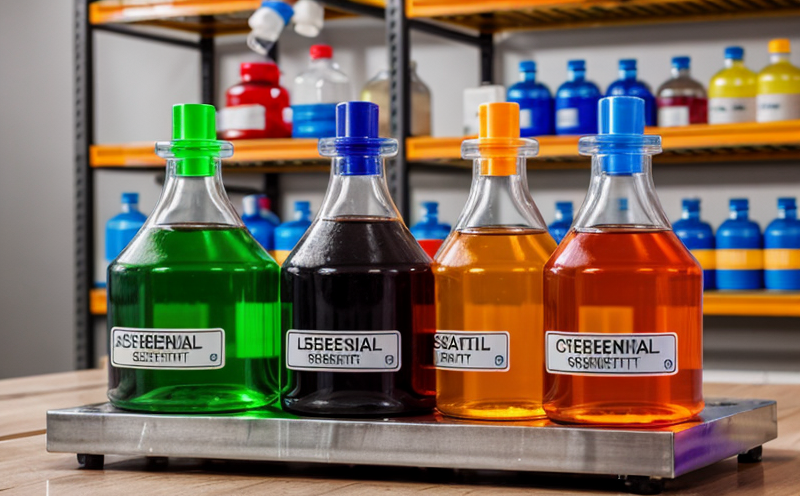Sensitizing Substances Testing in Household Items
Consumer products and household items are integral to our daily lives. However, certain chemicals used in their manufacture can pose risks if not properly identified or managed. Sensitizing substances testing is a critical component of ensuring the safety and well-being of consumers. These tests identify allergens that may trigger adverse reactions such as skin rashes, asthma, or other immune responses.
The importance of this testing cannot be overstated, especially in light of increasing consumer awareness about health and safety issues. Regulatory bodies worldwide are implementing stricter rules to protect the public from potentially harmful substances. For instance, the EU's REACH regulation mandates rigorous testing for sensitizing chemicals, ensuring that products meet stringent safety standards.
Our laboratory specializes in comprehensive chemical safety testing services tailored specifically for household items. We employ advanced analytical techniques and state-of-the-art equipment to ensure accurate identification of sensitizing agents. This service caters to various sectors including home goods manufacturers, personal care product developers, and any company handling consumer-facing products.
Our testing process involves several key steps: initial consultation with the client to understand their specific needs; thorough sample preparation using industry-standard protocols; rigorous analysis employing multiple techniques such as chromatography, spectroscopy, and immunoassays. Each step ensures that we deliver reliable results aligned with international standards.
The outcome of this testing is crucial not only for compliance but also for enhancing brand reputation by demonstrating commitment to consumer safety. By identifying sensitizing substances early in the development cycle, companies can make informed decisions about ingredient substitutions or reformulations, thereby reducing risks associated with product launches.
Moreover, understanding which compounds might elicit allergic responses allows manufacturers to design safer products that cater to diverse customer bases, including those who have specific allergies or sensitivities. This approach fosters trust between brands and consumers, fostering long-term relationships built on mutual respect for health and safety standards.
To summarize, our sensitizing substances testing service plays a vital role in safeguarding public health while supporting business objectives through informed decision-making processes. With our expertise and commitment to quality, we provide peace of mind knowing that the products leaving our facilities are safe for use by consumers worldwide.
Applied Standards
The testing conducted under this service aligns closely with several international standards designed specifically for chemical safety assessment. These include:
- ISO 10993-10: Biological Evaluation of Medical Devices—Part 10: Sensitization Testing
- ASTM E2485-17: Standard Practice for Determining the Skin Sensitizing Potential of Chemicals Using Repeated Insult Patch Test (RIPT)
- EN 936: Cosmetics—Determination of Irritation and/or Sensitization Potential by Local Application
These standards provide robust frameworks for assessing the potential sensitizing effects of chemicals on human skin. Our team ensures that all tests comply fully with these guidelines, guaranteeing accurate and consistent results.
Scope and Methodology
The scope of our sensitizing substances testing encompasses a wide range of household items where contact with human skin is likely. This includes but is not limited to:
- Cosmetics: Lotions, creams, soaps, shampoos
- Cleaning products: Detergents, polishes, disinfectants
- Fabric care items: Laundry detergents, fabric softeners
For each item tested, we follow a standardized methodology that involves:
- Sample collection and preparation
- Application of the substance to human skin according to specified protocols
- Monitoring for any signs of irritation or sensitization over defined periods
- Data analysis and interpretation based on established criteria
This structured approach ensures that we capture all relevant data points necessary for determining the sensitizing potential accurately.
| Use Case | Description |
|---|---|
| Product Development | Evaluating new ingredients for potential sensitizing properties before market introduction. |
| Compliance Audits | Demonstrating adherence to regulatory requirements related to chemical safety. |
| Risk Assessment | Identifying risks associated with specific chemicals used in product formulations. |
| Innovation Support | Assisting in the development of safer, more effective products without compromising quality. |
| Quality Assurance | Maintaining high standards throughout production processes to ensure consistent safety levels. |
| Consumer Protection | Ensuring that products do not contain harmful sensitizing agents, thus protecting end users. |





